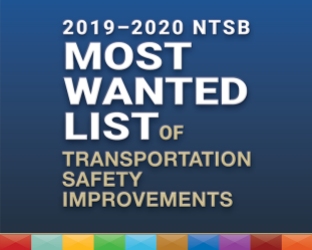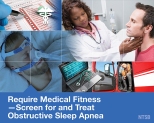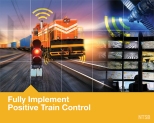By Chairman Robert L. Sumwalt

What do you call 125 participants in an NTSB Most Wanted List (MWL) mid-point progress meeting, each of whom has their own idea of a transportation safety goal to achieve by the end of the year?
An excellent start.
On February 4, the NTSB hosted attendees from government, industry, and the advocacy community to discuss progress on the 2019-2020 MWL. The conversations were productive and lively, and there was one thing we all agreed on: we need to achieve more in 2020.
Many people believe the NTSB’s work is done when an investigation has been completed, and we’ve determined the probable cause of an accident. But finding out what happened and why it happened is just half the equation.
The second half is arguably the most important part of our investigations: After determining the what and why, we issue safety recommendations aimed at correcting the deficiencies we uncovered, and thus, preventing similar accidents from happening again.
Even then, our work is still not complete. Recommendations must be implemented by their recipients before they begin to save lives. Therefore, part of our work is to highlight these recommendations and advocate for their implementation.
Board members, safety advocates and other NTSB staff are dedicated to fostering the cooperation necessary to ensure those life-saving recommendations are implemented, so the issues can be addressed and ultimately solved.
The MWL was conceived in 1990 and is the NTSB’s premiere advocacy product. It groups together unimplemented safety recommendations under broad topic areas that we refer to as issue areas. Issues placed on the list are selected from safety recommendations and emerging areas, and are based on the magnitude of risk, potential safety benefits, timeliness, and probability of advocacy efforts to bring about change. Simply put, MWL issue areas are those that we believe need the most attention to prevent accidents, reduce injuries, and save lives.
Up until 2017, the MWL was updated annually. That year, we went to a biennial list, with the provision that we conduct a mid-point progress review. And that, of course, is why we gathered on February 4. The purpose of the meeting was to receive input from stakeholders on where the current list is going, what are the impediments to implementing these recommendations, and what we can do better to advocate successful implementation of these recommendations. It was a day for us at the NTSB to listen to input and feedback.
Prior to the midpoint meeting, only 31 NTSB safety recommendations had been implemented out of 268 targeted in this MWL cycle. Implementing these 31 recommendations will make transportation safer by improving pipeline, aviation, railroad, marine, and highway safety. But as attendees of our mid-point evaluation agreed, implementation of these 31 recommendations, while welcome, is just not enough.
Member Jennifer Homendy and Robert Hall, Director of our Office of Railroad, Pipeline, and Hazardous Materials Investigations, guided the breakout session for that mode. Dana Schulze, Director of NTSB’s Office of Aviation Safety and I facilitated the conversations in the aviation breakout session. The marine safety session was headed-up by Morgan Turrell, Deputy Director of our Office of Marine Safety. And finally, Vice Chairman Bruce Landsberg took the highway safety discussion, joined by Rob Molloy, Director of our Office of Highway Safety.
Here are some of the thoughts that our attendees contributed:
- Support efforts in the states to strengthen traffic safety laws to address issues like speeding, distracted and impaired driving and seat belt use.
- Not every solution is a regulatory solution; work with industry and advocates to move toward voluntary compliance to get the required change done.
- Increase and improve data collection.
- Be proactive rather than reactive—through increased coordination between the NTSB, agencies, and industry.
- Identify and promote industry best practices; to make change, it helps to see, hear, and learn from others who have accomplished the task.
- Increase dialogue between the NTSB and industry outside of the context of accidents through preliminary recommendation communication, site visits, and board member meetings.
- Creating a safety culture (in business) and addressing negative social norms (in public) are perhaps the most critical steps needed to improve transportation safety overall.
- NTSB can play a key role in bringing all the key players together, promoting dialogue, and encouraging change.
NTSB recommendations, when implemented, can help to prevent unnecessary deaths, injuries, and property damage. The recommendation that is implemented today could be the life that is saved tomorrow. So, the voices of those closest to the battle for implementation—including the attendees at the midpoint progress meeting—are invaluable.
Time will tell how many critical MWL advances can be achieved by year’s end. I hope it’s all of them.












